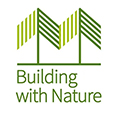Ecological Mitigation
Put simply, ecological mitigation measures are those designed to limit the effects of a development on wildlife. If you are proposing to develop a site, and it has been determined that there could be impacts on habitats or species of nature conservation importance, ecological mitigation measures will need to be detailed as part of your planning submission and to ensure that you adhere to planning policy and wildlife legislation.
Specific mitigation measures will depend on the species/habitats present on your site, however there is a standard ‘Mitigation Hierarchy’ that should always be followed as detailed below. Seeking the advice of an ecological consultant at an early stage in your project means that avoidance and mitigation measures can be incorporated into the scheme design from the outset rather than retrospectively. This makes for a much smoother process leading up to planning.
1. Avoid
The first thing that should be considered is whether adverse impacts can be avoided. For example, by altering the design of a scheme, moving a site boundary, or by timing works so as to avoid impacts on a protected species.
2. Mitigate
Where adverse impacts cannot be avoided, efforts should be made to minimise impacts as far as practically possible through implementation of mitigation measures on site. Mitigation measures must ensure that there are no significant impacts on habitats or species considered to be of importance.
Some examples of common mitigation measures are listed below:
- Signage, protective fencing and buffer zones around sensitive areas/features
- Timing of works to avoid sensitive times e.g. no noise or light disturbance at night
- Working methodologies– which detail any sensitive working methods required
- Toolbox talks to construction staff to raise awareness of ecological issues on site and measures which need to be implemented.
Where protected species are concerned such as breeding birds, badgers, bats, dormice, great crested newts, reptiles, otters or water voles, mitigation measures may include:
- Displacement – where vegetation is managed to encourage species to disperse to areas of safety
- Installation of bat boxes, or nest boxes, creation of hibernacula, new setts or ponds
- Creation of new habitats
- Capture and relocation operations.
In some circumstances a development licence may be required from Natural England in order for any works which impact upon protected species to proceed lawfully. Detailed mitigation measures also need to be included within any development licence application.
3. Compensate
Where impacts are unavoidable, compensation measures offsite should be considered, but only ever as a last resort. Compensatory measures usually require ‘like for like’ meaning that any important habitats or features lost on site should be replicated in terms of composition and extent offsite. This can be a lengthy and costly process.
Biodiversity Offsetting
‘Biodiversity Offsetting’ gives developers the opportunity to deliver biodiversity benefits in compensation for loss in a measurable way. A defined methodology is used to calculate how many ‘biodiversity units’ need to be paid by the developer to offset the loss caused by their development. For example, a development that destroys an area of species-rich grassland in one area could compensate by paying for the creation of a new area of grassland elsewhere. The aim is an overall ‘no net loss’ of biodiversity’. Biodiversity Offsetting is a more recent concept that is still a work in progress.
Ecological Enhancement
Alongside the mitigation hierarchy, it is also important to consider how you could enhance the ecology of your site. As well as providing advice on products and techniques, we are able to undertake practical enhancement work ourselves. Some examples of enhancement are provided below:
- Creation, restoration or enhancement of habitats such as wildflower meadows, wetlands, woodland, heathland and ponds
- Planting of native trees, orchards and hedgerows
- Living walls and green roofs
- Incorporation of bat and bird roosting and nesting features into buildings
- Creation of hibernacula such as log or stone piles or creation of dry stone walls
- Installation of bee bricks
- Planting of species with known benefits to wildlife in herbaceous borders, pots or planters
- Creation of a rockery, bug hotel or butterfly bank.
At Burton Reid this is something we strongly encourage, not only for the benefit of wildlife and to adhere to local planning policy but also for the wellbeing of local communities who will benefit from access to nature and green space.
Whether you are an individual homeowner, a developer looking to submit a planning application or if you are a member of the project team such as an architect, planning consultant, or landscape architect and require further information on ecological mitigation, one of our experienced ecological consultants at Burton Reid will be happy to help.
Subscribe to Our Newsletter
Sign up to our newsletter to receive updates from the field and invites to our Ecology Briefing events.
Registered Office
Suite 8, Buckfastleigh Business Centre
33 Chapel Street, Buckfastleigh
Devon, TQ11 0AB
Contact
Registered Office: 01364 701150
Email: hello@burtonreid.co.uk



© Burton Reid Associates 2019
